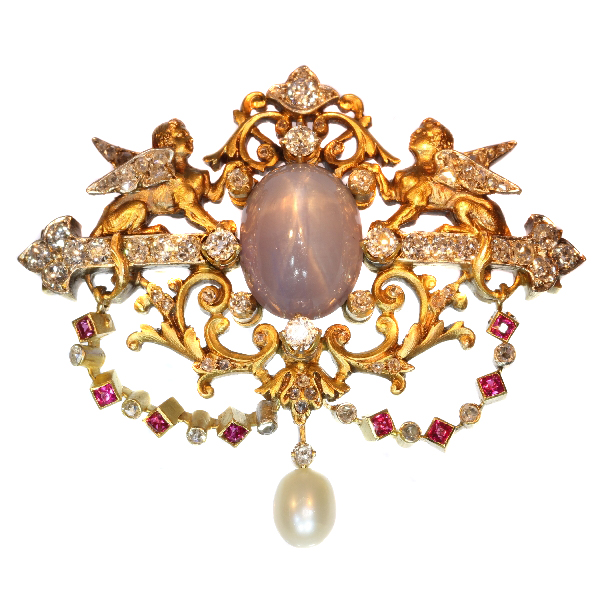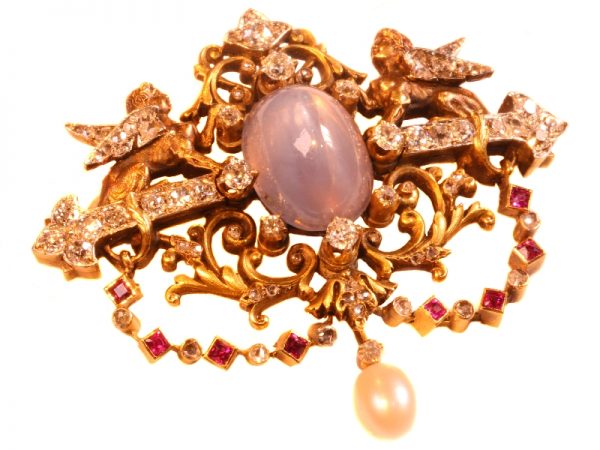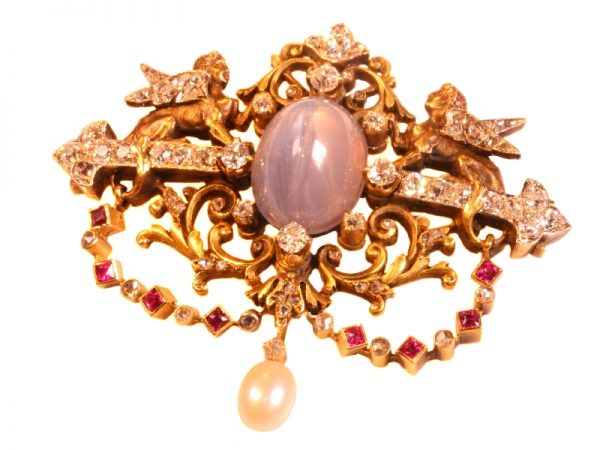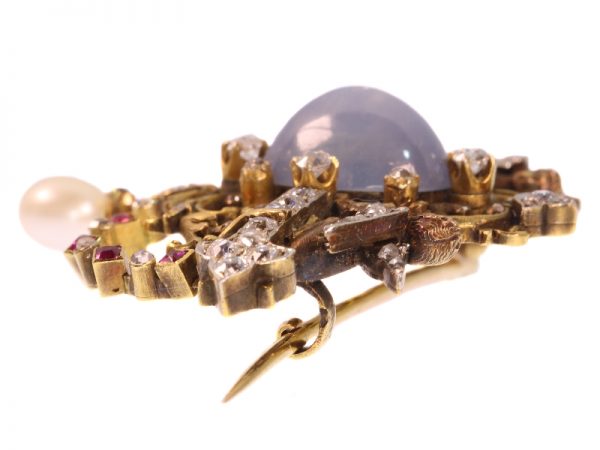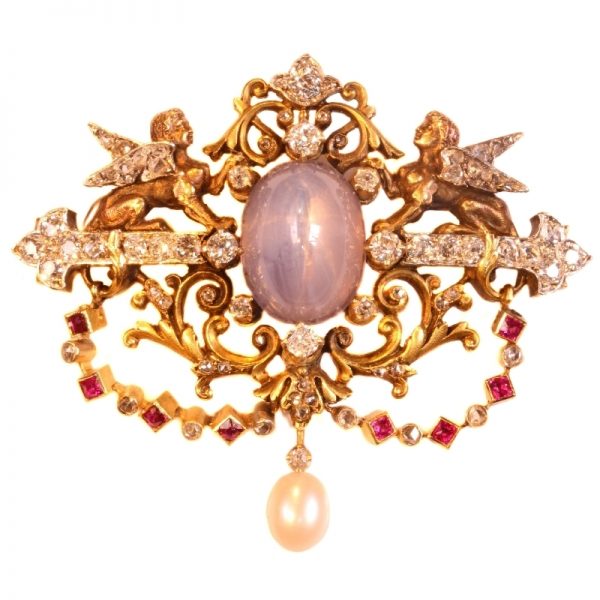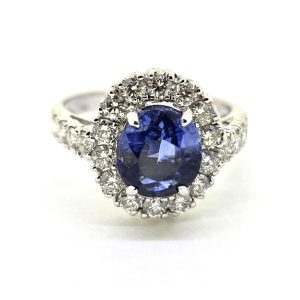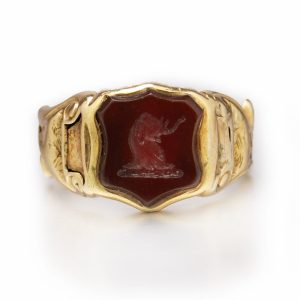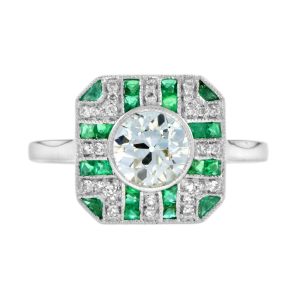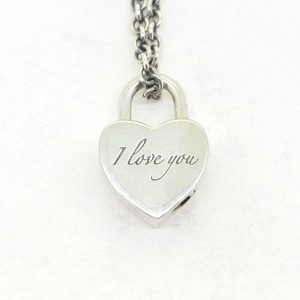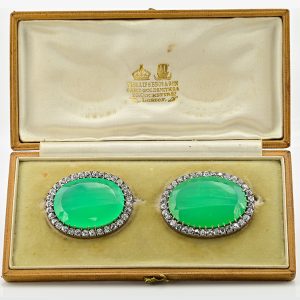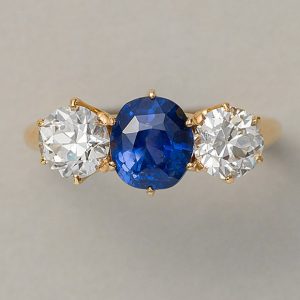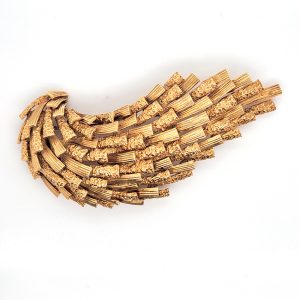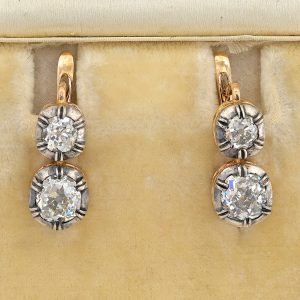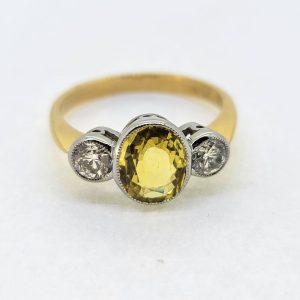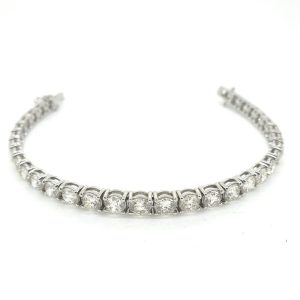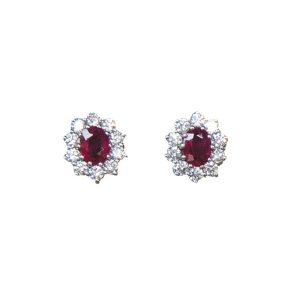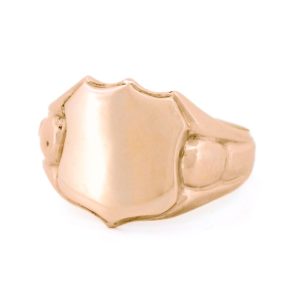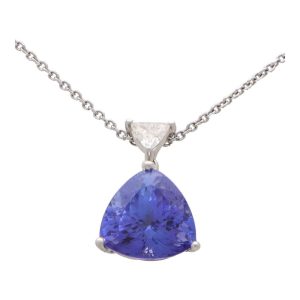Antique Victorian French Diamond and Star Sapphire Sphinx Brooch
Antique jewellery object group: brooch
Condition: excellent condition
Country of origin: France
Style: Victorian – Victorian decorative arts refers to the style of decorative arts during the Victorian era. The Victorian era is known for its eclectic revival and interpretation of historic styles and the introduction of cross-cultural influences from the middle east and Asia in furniture, fittings, and Interior decoration. Victorian design is widely viewed as having indulged in a regrettable excess of ornament. The Arts and Crafts movement, the aesthetic movement, Anglo-Japanese style, and Art Nouveau style have their beginnings in the late Victorian era.
Style specifics: The Romantic Victorian Period – Experts divide the reign of Queen Victoria, also called The Victorian era (1837 – 1901) into three periods of about twenty years each; The Romantic Victorian Period (1837 – 1860), The Grand Victorian Period (1860 -1880), and the Late or Aesthetic Victorian Period (1880 – 1901).
We consider this to be of the Romantic Victorian Period. This period covers the coronation of Victoria as Queen of Great Britain and Ireland, and her marriage to King Albert and their love, their devotion to their marriage and to their country are the sources of inspiration for this period. The jewels of this period are made of intricate carvings, special techniques where the enamel is subtly worked. These techniques allowed to give the jewel a certain opulence with less precious metal needed. As precious metals were really rare at that time. Highly favoured (semi-) precious stones in this period are amethyst, coral, garnets, seed pearls and turquoises. The connotation is obviously sentimental, symbolic and romantic with reminiscent Gothic and/renaissance patterns and an abundant use of motifs like anchors, birds, branches, crosses, hearts and snakes.
Period: ca. 1860
Source of inspiration: Mythology and perhaps Freemasonry
Theme: A star sapphire guarded by two sphinxes
Material: 18ct yellow gold
Extra information: Sphinx – The Greek mythology tells us the story about Oedipus (a king from Thebe) and his confrontation with the Sphinx in his search for the truth. The Sphinx had the head and breasts of a woman, the body of a lion, the tail of a snake and the wings of an eagle. This monster asked all travellers the enigmatic question: “Which creature with a voice walks in the morning with 4 legs, in the afternoon with two and in the evening with three.” The Sphinx destroyed everyone who answered incorrectly. If you want to know the correct answer by which Oedipus destroyed the Sphinx, you’ve got to check Wikipedia a bit 🙂
Sphinx and Freemasonry: The sphinx image also has been adopted into Masonic architecture. Among the Egyptians, sphinxes were placed at the entrance of the temples to guard their mysteries, by warning those who penetrated within that they should conceal a knowledge of them from the uninitiated. Champollion said that the sphinx became successively the symbol of each of the gods. The placement of the sphinxes expressed the idea that all the gods were hidden from the people, and that the knowledge of them, guarded in the sanctuaries, was revealed to initiates only. As a Masonic emblem, the sphinx has been adopted in its Egyptian character as a symbol of mystery, and as such often is found as a decoration sculptured in front of Masonic temples, or engraved at the head ofMasonic documents. It cannot, however, be properly called an ancient, recognized symbol of the order. Its introduction has been of comparatively recent date, and rather as a symbolic decoration than as a symbol of any particular dogma. (From: Wikipedia)
Greek hybrid creatures – A hybrid is a composite of two or more species of animal and/or human. Strange as they may appear, the Greeks were endlessly fond of fabricating these creatures – one will recognize hybrids in the earliest myths and legends, not to mention inhabiting numerous works of art. For the Greeks especially, these beings of the imagination must have had great significance, in that they represented the uncivilized forces in nature that opposed mankind. The seven most known hybrids are:
The centaur – In Greek mythology and art, the centaur has the torso of a human combined with the body of a horse.
The cockatrice – this creature was also known as a basilisk (“king of serpents”), and its very glance could kill; the cockatrice was composed of a dragon’s tail and assorted poultry parts.
The giants (Gigantes) – These fierce and frightening beings were the offspring of Gaia (the Earth).
The griffin – According to myth, the griffin was a creature with a lion’s body attached to the head, wings, and claws of an eagle.
The harpy – Harpies had female torsos melded with vulture parts; the name harpy is derived from the Greek word that means “snatcher”.
The satyrs (faun) – Satyrs were often the companions of Dionysos, and these creatures were depicted in myth and art with the legs of goats and bestial natures.
The sirens – Women with bird-like bodies; sirens were legendary for luring sailors by singing their enchanted songs.
Diamond(s): 26 old brilliant-cut diamonds with an estimated weight of 1.12ct.(colour and clarity: G/I, vs/i).
47 rose-cut diamonds. We do not have the weight of the diamonds which is normal in our trade when it comes to rose cuts.
– All diamond weights, colour grades and clarity are approximate since stones are not removed from their mounts to preserve the integrity of the setting.
Precious stones: One star sapphire with an estimated weight between 7ct and 8ct. colour: light blue opaqueness. Treatment: unknown.
Eight rubies (lab produced) (also called Verneuil ruby). The fact that these stones are lab produced has no influence on the value of this jewel. Natural rubies and lab produced rubies were both used in this era, rather more for their effect than for their intrinsic value. And one pearl
– All colour stone weights are approximate since stones are not removed from their mounts to preserve the integrity of the setting.
Birthstones: Diamond is the birthstone (or month stone) for April ruby for July sapphire for September and pearl for June.
Master: no trace of a master mark. Although we could not find an indication who the maker could be, we think in the direction of masters such as Froment Meurice, Fouquet, Wièse or Falize.
Stamped: “924” which, most likely, is a workshop internal number
Hallmarks: The French control mark for 18ct gold representing an eagle’s head that was in use in France from about 1838.
Dimensions: 1,75 cm (0,69 inch) x 1,50 cm (0,59 inch)
Weight: 18,10 gram (11,64 dwt)
Product SKU
JDAD-18052-0023
£13,950
1 in stock
Antique Victorian French Diamond and Star Sapphire Sphinx Brooch
Price: £13,950 | Product SKU: JDAD-18052-0023
Please use the form below to enquire about this item. Alternatively you can call us directly on 020 7438 2046 or email us at [email protected].

